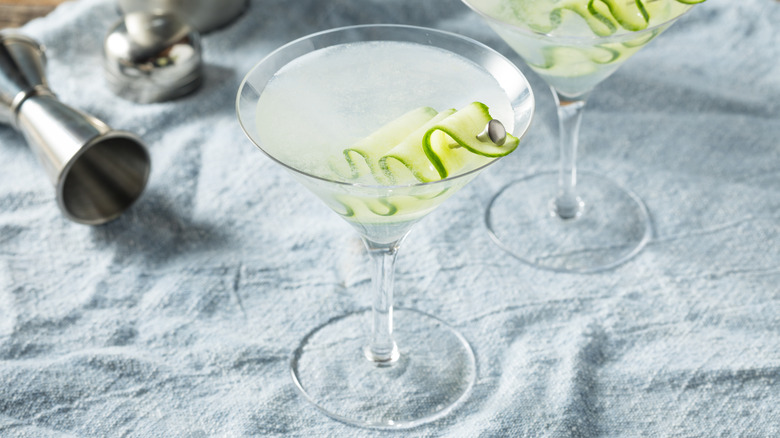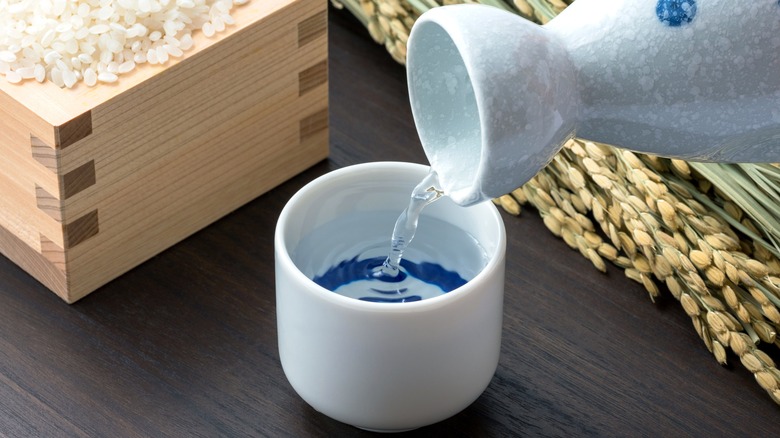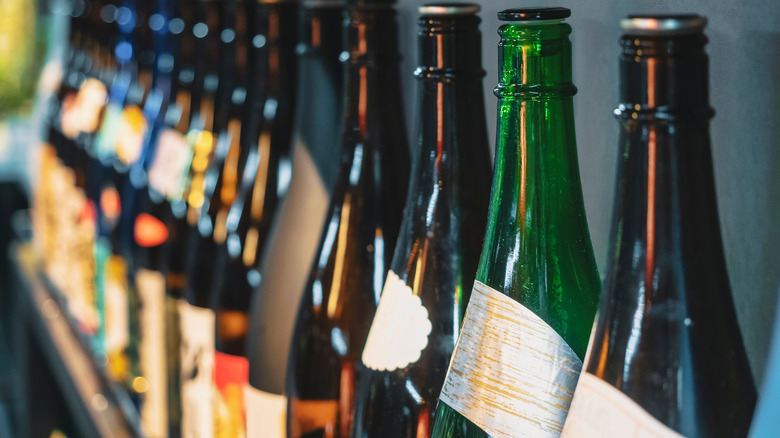Sake Is A Slept-On Ingredient Swap For An Elegant Martini
In recent years, the martini has entered something of a midlife crisis. Once branded by a humble combination of spirits with an optional splash of olive brine, the drink has evolved into a cocktail menu theme all its own, sporting variations that, some would argue, have gone too far. We wouldn't blame you if the sight of a filthy martini with a skewer of anchovies and pepperoncini left you pining for a simpler time before TikTok. (For the record, we happen to like them.)
On the other hand, the trend has given way to some inventive takes that enhance, rather than negate, the drink's essential elegance. Take the sakura martini, an elevated version of the saketini — the latter is thought to have been introduced at the 1964 World's Fair, according to a conversation between Alcohol Professor and Michael Anstendig, who co-authored "The Japanese Art of the Cocktail" with veteran bartender Masahiro Urushido, though Benihana's late founder, Rocky Aoki, also took credit for the vintage cocktail's creation. While both drinks use sake (the Japanese fermented rice alcohol) as a base, the sakura martini calls for maraschino cherry liqueur and a pickled cherry blossom, the national flower of Japan. Speaking with Grub Street in 2015, the drink's architect, Tokyo-born NYC bartender Kenta Goto, said, "I couldn't think of any other garnish that would be better for that type of drink." Even if you can't find that particular specialty ingredient, consider Goto's creation a sign to use sake in your next martini.
A well-rounded cocktail
A classic martini calls for gin or vodka and a small amount of dry vermouth. Meanwhile, sake martinis give vermouth the boot and can (but don't necessarily have to) match the primary ingredient in equal parts.
While it might seem like a daring combination, sake is often used as a substitute for dry vermouth. The two alcoholic beverages share a similar ABV and a clean, slightly floral taste. Used in a martini, sake brings a certain rounded sweetness that beautifully complements the herbaceousness of gin. Add more sake than gin for a sweeter, lower ABV martini, or keep the sake levels to a minimum for a boozier, more astringent tipple.
You might lean further into the sweetness by introducing an additional spirit, such as Kenta Goto's maraschino cherry liqueur, or a non-alcoholic add-in like simple syrup and a splash of yuzu or other fruit juice. Not into sugary drinks? Keep it super simple by shaking sake and gin with ice and garnishing with a strip of Japanese cucumber or a lemon peel.
Choosing the right sake
If you've made it this far, chances are you've been convinced that putting sake in your martini is a good idea. But before you go busting out your cobbler or Boston cocktail shaker, know that not just any sake will do. Kenta Goto's sakura martini opts for an aged Genshu sake, which has a slightly higher ABV and a bolder taste than other varieties of the brewed booze, ensuring its flavors won't be obliterated by your choice of gin.
Others recommend using Junmai, a pure variety of sake made simply with rice, water, yeast, and koji, the naturally occurring culture used in soy sauce and countless other Japanese food products. Still others prefer Ginjo, a decidedly fruitier category. Meanwhile, there are some who reach for Nama, an unpasteurized category of sake that boasts the brightest, boldest flavors of the bunch.
Like Genshu, these varieties tend to have higher ABVs than other sakes. Aside from that commonality, they bring distinct, nuanced flavors to the table — or the martini glass.


